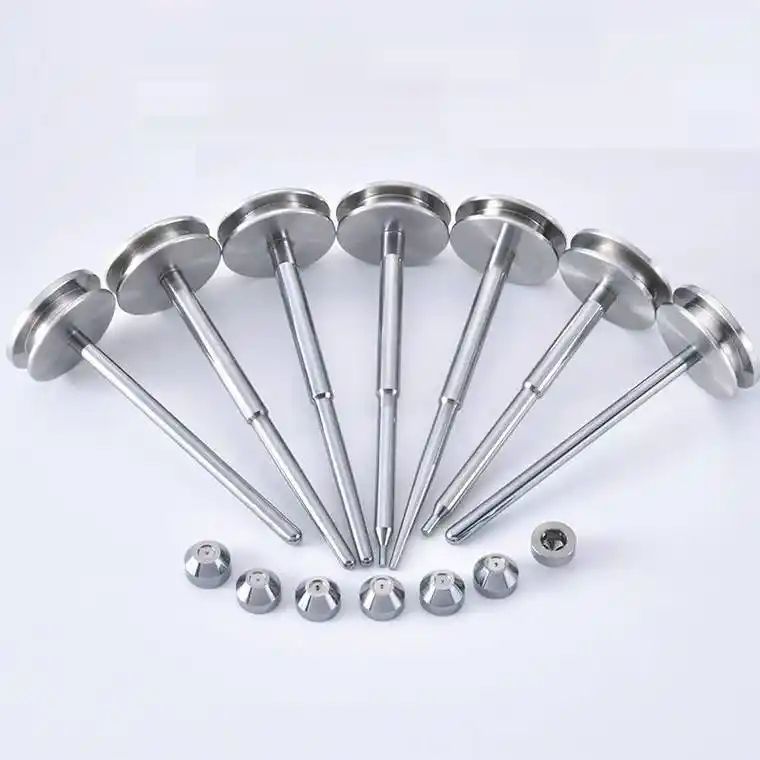Dispensing Nozzles Boom: Trends, Challenges, and Future Hotspots
Monday,31 Mar,2025
The dispensing nozzles market is surging forward, with forecasts estimating a climb to USD 3.8 billion by 2032, propelled by a CAGR of around 5.5% from 2024 onward. As of 2025, this growth reflects a global push for precision technology in fluid dispensing, critical for industries like automotive assembly, semiconductor production, and medical device manufacturing. These nozzles—designed to control the flow of liquids, adhesives, or gases—are evolving beyond simple tools into sophisticated components of automated systems. Yet, the market faces hurdles: escalating costs, raw material shortages, and geopolitical tensions threaten its momentum. This blend of opportunity and uncertainty makes it a focal point for industry watchers.
At the heart of the dispensing nozzles market lies precision technology. With devices shrinking—think 0402 chips in electronics or micro-dosed pharmaceuticals—manufacturers demand nozzles capable of delivering exact volumes, often in microliters. Innovations like smart nozzles with sensors and real-time monitoring are gaining traction, reducing waste and boosting efficiency. However, the high price of these advanced systems can deter smaller firms, raising questions: Will precision remain an elite advantage, or can scalable solutions democratize access?

Automation is reshaping the dispensing nozzles market, as factories integrate robotic systems to streamline production. In automotive plants, nozzles apply adhesives with pinpoint accuracy, while food processing lines rely on them for consistent sauce dispensing. This shift addresses user problems like human error and downtime, but it also ties the market to broader supply chain stability. Disruptions—like those seen in recent shipping crises—could stall progress, making resilience a hot topic for 2025.
Sustainability is emerging as a double-edged sword in the dispensing nozzles market. Manufacturers are crafting eco-friendly nozzles from recyclable materials to meet green mandates, appealing to environmentally conscious users. Yet, controversial trade policies and tariffs, especially in key regions like Asia-Pacific, threaten to hike costs and fragment supply chains. Are these regulations a necessary push for local innovation, or a barrier to global efficiency? The debate is heating up, promising lively discourse.
The dispensing nozzles market is brimming with interaction potential. Miniaturization trends in electronics and healthcare signal sustained demand for precision tools, while electric vehicle (EV) battery production opens new avenues for specialized nozzles. Controversial subsidies—like those in the U.S. CHIPS Act—could spark regional rivalries, driving innovation or division. As precision technology advances, expect heated discussions on cost, accessibility, and environmental impact to dominate industry forums in the near future.
In summary, the dispensing nozzles market is a dynamic arena where precision technology meets real-world challenges. Its growth hinges on balancing innovation with affordability, all while navigating a web of policies and user expectations. As industries lean harder into automation and sustainability, this market’s evolution will likely captivate stakeholders through 2025 and beyond.
A: The market thrives on precision technology demands in automotive, electronics, and healthcare, alongside automation trends boosting efficiency and accuracy.
A: Automation drives demand for advanced nozzles in manufacturing, reducing errors and enhancing output, though it ties the market to supply chain reliability.
A: Eco-friendly nozzles address waste reduction, but trade policies and material costs create tension, influencing the dispensing nozzles market’s direction.
A: Users grapple with high costs of precision equipment and supply chain disruptions, pushing for affordable, adaptable solutions in fluid dispensing.
A: Expect focus on EV battery applications, miniaturization, and policy debates, with precision technology shaping competitive edges and market hotspots.
At the heart of the dispensing nozzles market lies precision technology. With devices shrinking—think 0402 chips in electronics or micro-dosed pharmaceuticals—manufacturers demand nozzles capable of delivering exact volumes, often in microliters. Innovations like smart nozzles with sensors and real-time monitoring are gaining traction, reducing waste and boosting efficiency. However, the high price of these advanced systems can deter smaller firms, raising questions: Will precision remain an elite advantage, or can scalable solutions democratize access?

Automation is reshaping the dispensing nozzles market, as factories integrate robotic systems to streamline production. In automotive plants, nozzles apply adhesives with pinpoint accuracy, while food processing lines rely on them for consistent sauce dispensing. This shift addresses user problems like human error and downtime, but it also ties the market to broader supply chain stability. Disruptions—like those seen in recent shipping crises—could stall progress, making resilience a hot topic for 2025.
Sustainability is emerging as a double-edged sword in the dispensing nozzles market. Manufacturers are crafting eco-friendly nozzles from recyclable materials to meet green mandates, appealing to environmentally conscious users. Yet, controversial trade policies and tariffs, especially in key regions like Asia-Pacific, threaten to hike costs and fragment supply chains. Are these regulations a necessary push for local innovation, or a barrier to global efficiency? The debate is heating up, promising lively discourse.
The dispensing nozzles market is brimming with interaction potential. Miniaturization trends in electronics and healthcare signal sustained demand for precision tools, while electric vehicle (EV) battery production opens new avenues for specialized nozzles. Controversial subsidies—like those in the U.S. CHIPS Act—could spark regional rivalries, driving innovation or division. As precision technology advances, expect heated discussions on cost, accessibility, and environmental impact to dominate industry forums in the near future.
In summary, the dispensing nozzles market is a dynamic arena where precision technology meets real-world challenges. Its growth hinges on balancing innovation with affordability, all while navigating a web of policies and user expectations. As industries lean harder into automation and sustainability, this market’s evolution will likely captivate stakeholders through 2025 and beyond.
FAQS
Q1: What fuels the dispensing nozzles market growth?
A: The market thrives on precision technology demands in automotive, electronics, and healthcare, alongside automation trends boosting efficiency and accuracy.
Q2: How does automation impact the market?
A: Automation drives demand for advanced nozzles in manufacturing, reducing errors and enhancing output, though it ties the market to supply chain reliability.
Q3: Why is sustainability a key issue?
A: Eco-friendly nozzles address waste reduction, but trade policies and material costs create tension, influencing the dispensing nozzles market’s direction.
Q4: What challenges do users face?
A: Users grapple with high costs of precision equipment and supply chain disruptions, pushing for affordable, adaptable solutions in fluid dispensing.
Q5: What’s next for the market in 2025?
A: Expect focus on EV battery applications, miniaturization, and policy debates, with precision technology shaping competitive edges and market hotspots.

